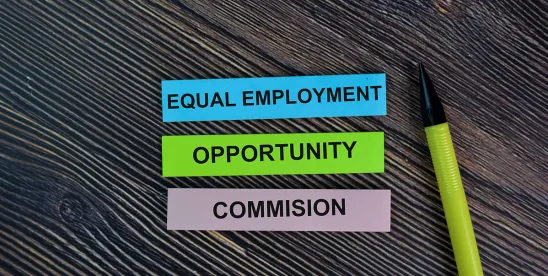The Equal Employment Opportunity Commission (EEOC) published its long-awaited final guidance on harassment in the workplace on April 29, 2024, several months following its released proposed guidance in September, which we previously discussed, and 25 years since its last workplace harassment guidance in 1999. The “Enforcement Guidance on Harassment in the Workplace” provides a detailed overview of recent anti-harassment case law, as well as the EEOC’s view of certain “hot button” issues and topics. The final guidance is substantively the same as the proposed guidance, but the EEOC added illustrative examples and analysis at the request of commentators.
Regarding sexual harassment, the final guidance clarifies that sex-based harassment includes harassment based on “pregnancy, childbirth and related medical conditions,” which can include harassment based on lactation, abortion and/or reproductive decisions about using or not using contraception or having or not having an abortion. The final guidance also clarifies that sex-based harassment includes harassment based on sexual orientation and gender identity. Examples of sex-based harassment are the disclosure of an individual’s sexual orientation or gender identity without permission, the repeated and intentional use of a name or pronoun inconsistent with the individual’s known gender identity, or the denial of access to a bathroom or other sex-segregated facility consistent with the individual’s gender identity.
During the comment period, commentators argued that because the US Supreme Court in Bostock v. Clayton County, 590 U.S. 644 (2020), specifically stated that the decision did not address “bathrooms, locker rooms or anything else of the kind,” the EEOC exceeded its authority in asserting these as examples of harassment in its guidance. While the EEOC disagreed with that argument in its commentary, this aspect of the guidance will likely be challenged.
The final guidance provides a helpful explanation regarding when a “hostile work environment” exists — it exists when harassment is so severe or pervasive that a reasonable person in the employee’s position would find the situation to be abusive. The harassment does not need to be both severe and pervasive, and whether harassment is severe or pervasive is highly fact-specific and dependent on the totality of the circumstances. Notably, employers are still obligated to end harassing behavior once they learn about it, even if the harassment has not yet been severe or pervasive enough to create a hostile work environment.
The final guidance also places an emphasis on harassment in the virtual workplace — especially in light of the rise of remote work following the COVID-19 pandemic. Specifically, the final guidance details that harassment can occur using work-related communications systems, accounts, devices or platforms (e.g., an employer’s email system, electronic bulletin board, instant message system, videoconferencing technology, intranet, public website, official social media accounts or other equivalent services or technologies). The final guidance provides the following examples of harassment in the virtual workplace: sexist comments made during a video meeting, ageist or ableist comments typed in a group chat; racist imagery visible in an employee’s workplace during a video meeting or sexual comments made during a video meeting about a bed being near an employee in the video image.
The final guidance provides that employers may be responsible for conduct that occurs outside of the workplace or on personal communications devices, if that conduct contributes to a hostile work environment in the workplace (e.g., co-workers see another co-worker’s harassing social media post on his personal social media platform and discuss it at work).
In the “Liability” section of the final guidance, the EEOC provides a detailed list of elements to be included in an employer’s anti-harassment policies, trainings and complaint procedures. While including these elements will strengthen an employer’s defense that it exercised reasonable care in preventing harassment in the workplace, the EEOC makes clear that an employer must actually implement these elements and take appropriate action when it is on notice of harassment in order to have a viable defense against harassment. The EEOC emphasizes that corrective action depends on the particular facts and circumstances — the nature of the corrective action varies, and an employer is not necessarily required to terminate the employee who engaged in the conduct.
Just like the proposed guidance, the final guidance addresses the balance of anti-harassment and accommodation obligations with respect to religious expression. The final guidance clarifies that while an employer has a duty to accommodate an employee’s sincerely held religious beliefs in the workplace, an employer does not have to do so when accommodating such beliefs would create, or unreasonably threaten to create, a hostile work environment.
As briefly mentioned above, legal challenges to the final rule are expected. Following the proposed guidance, more than 20 state attorneys general jointly submitted a letter to the EEOC asserting they would take legal action, mostly on the basis of religious discrimination, if the rules were finalized.
While not law, the final rules are effective immediately. If employers have not done so already, they should review the final guidance and make changes to anti-harassment policies, complaint procedures and trainings to reflect the final standards.




 />i
/>i

